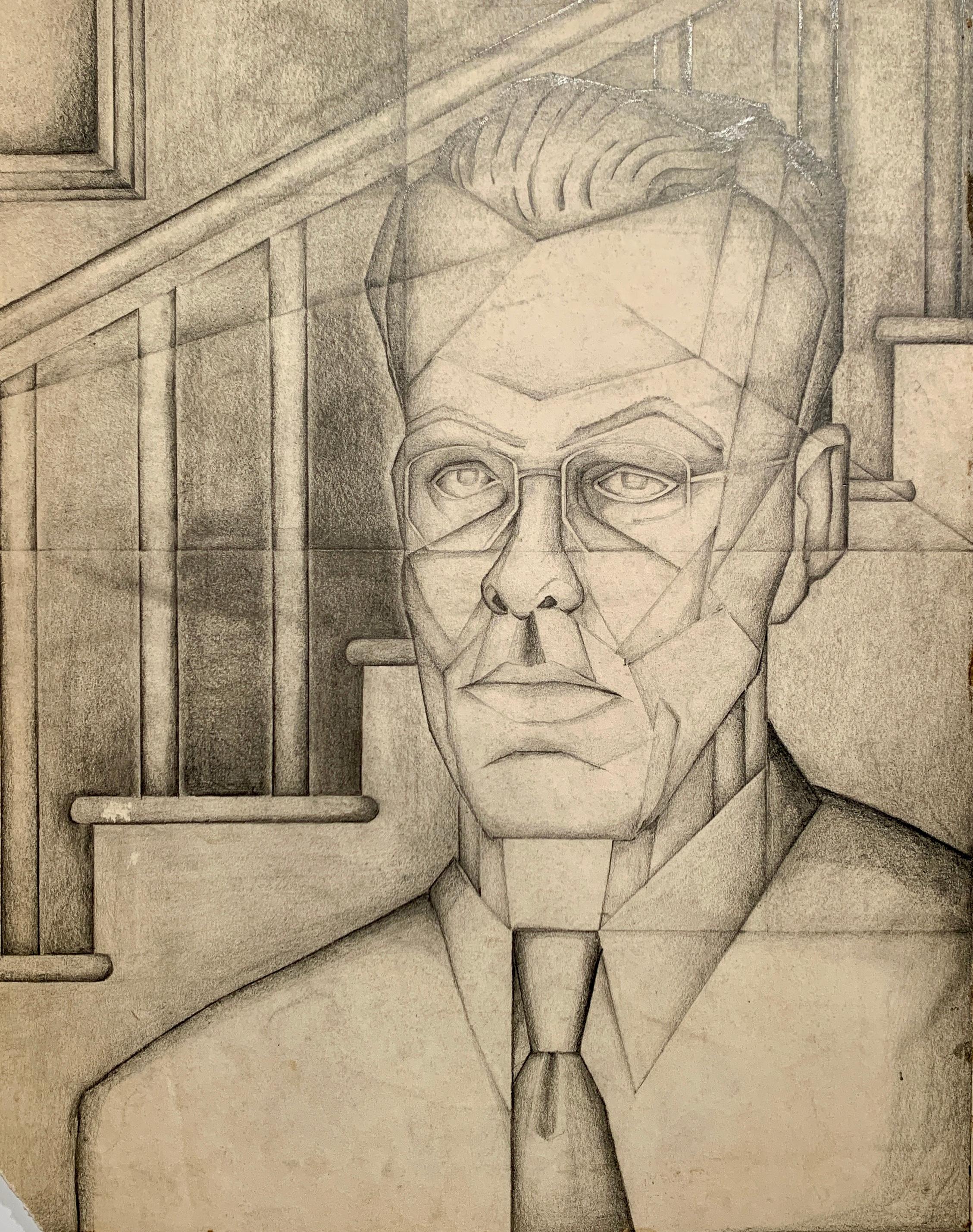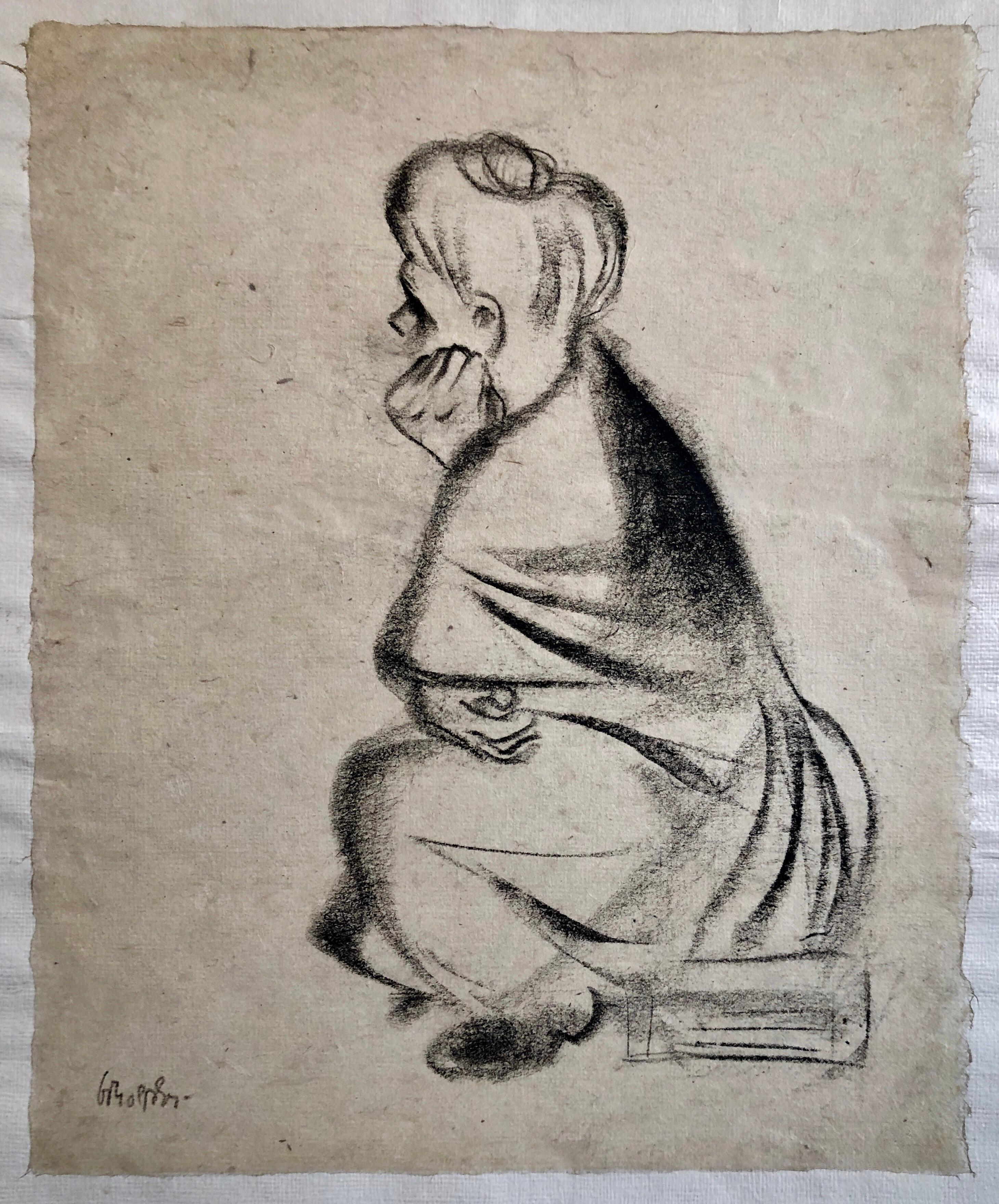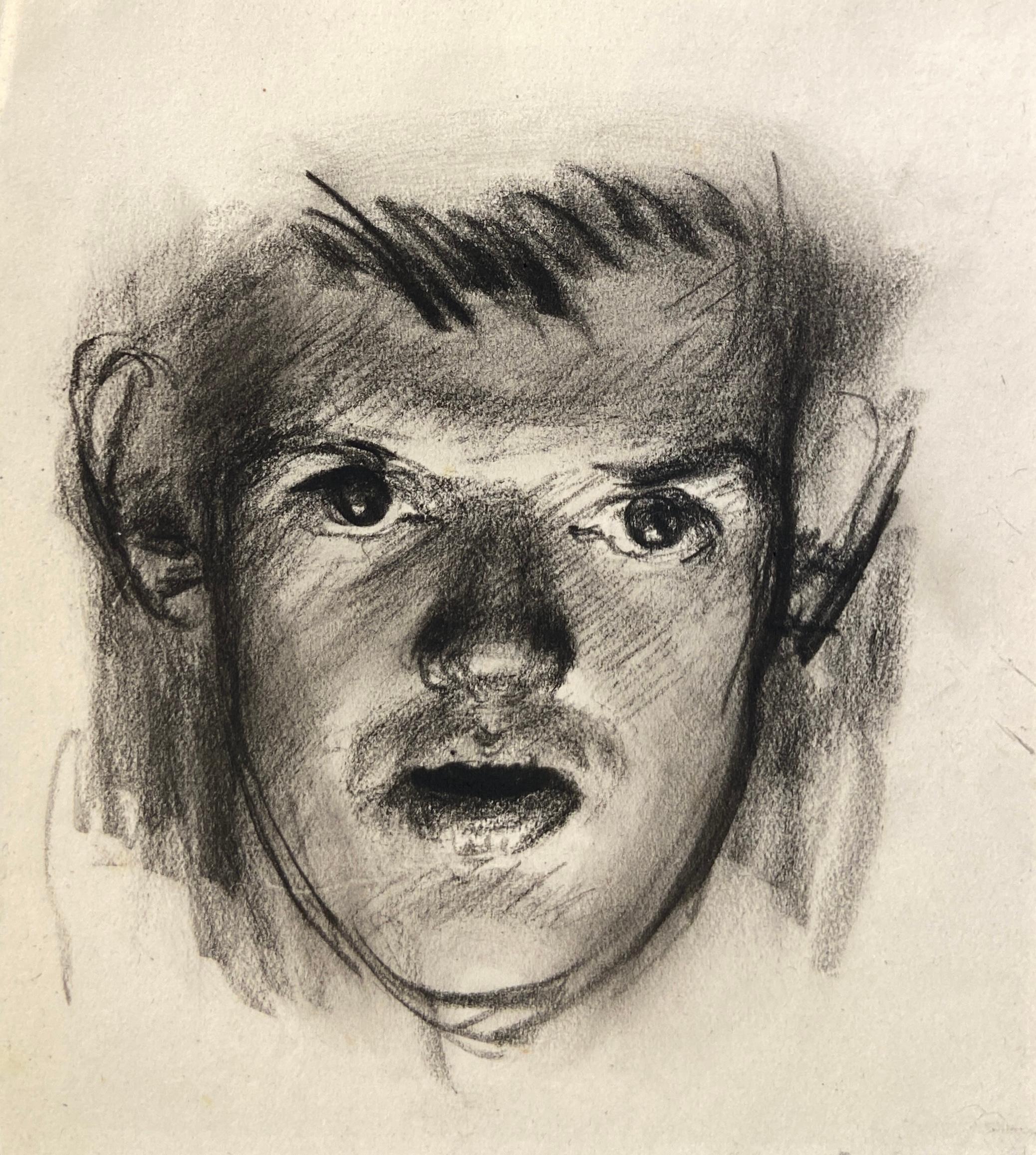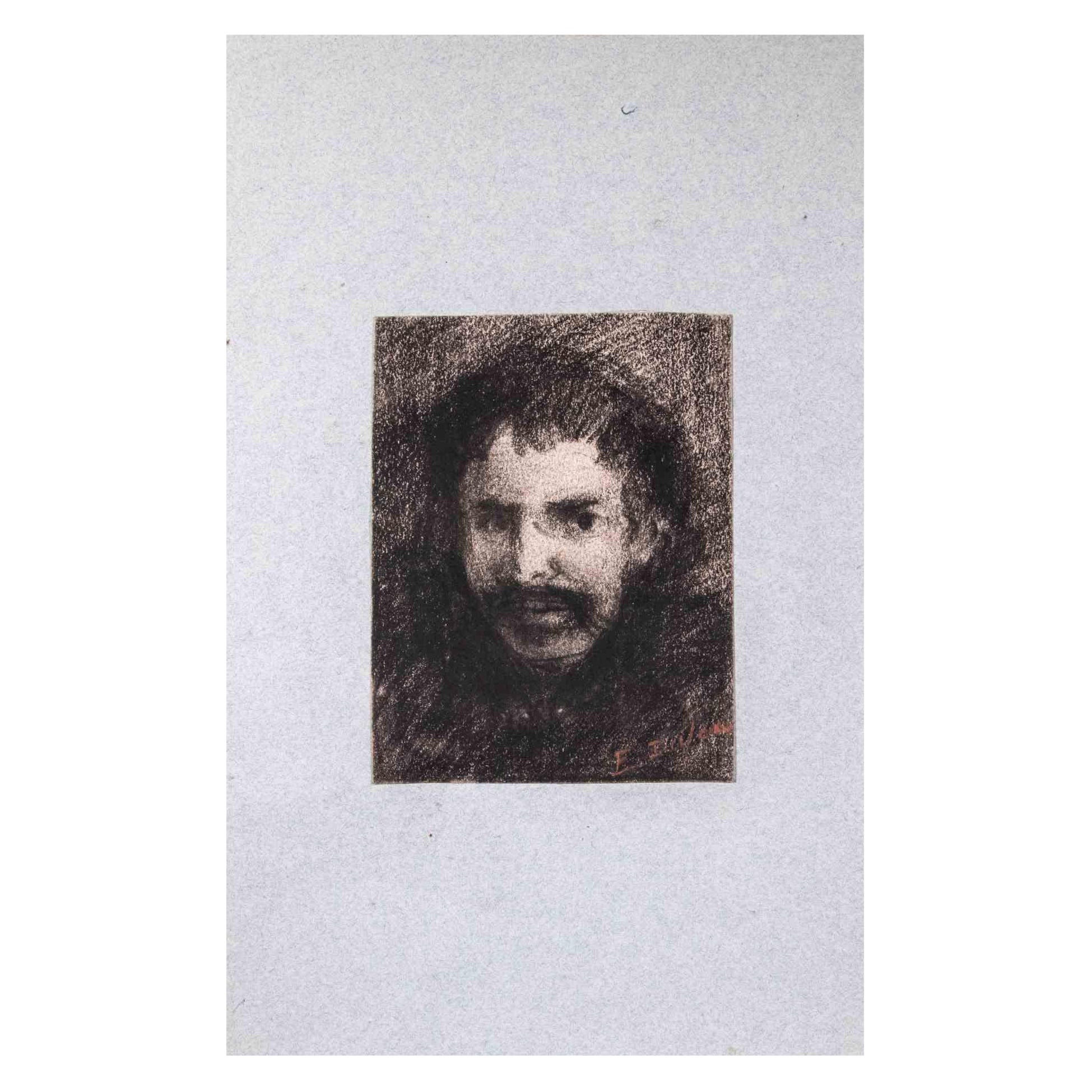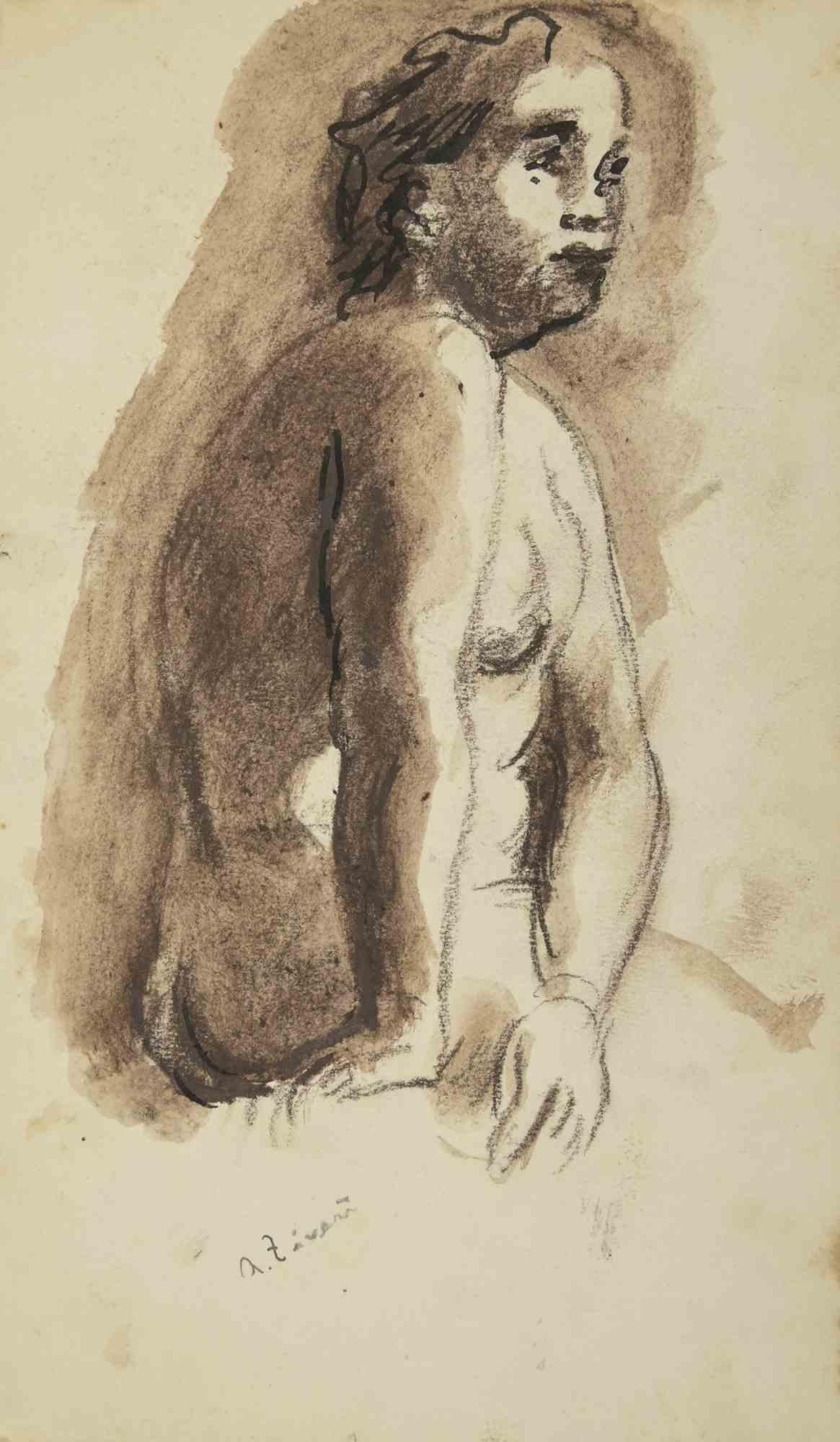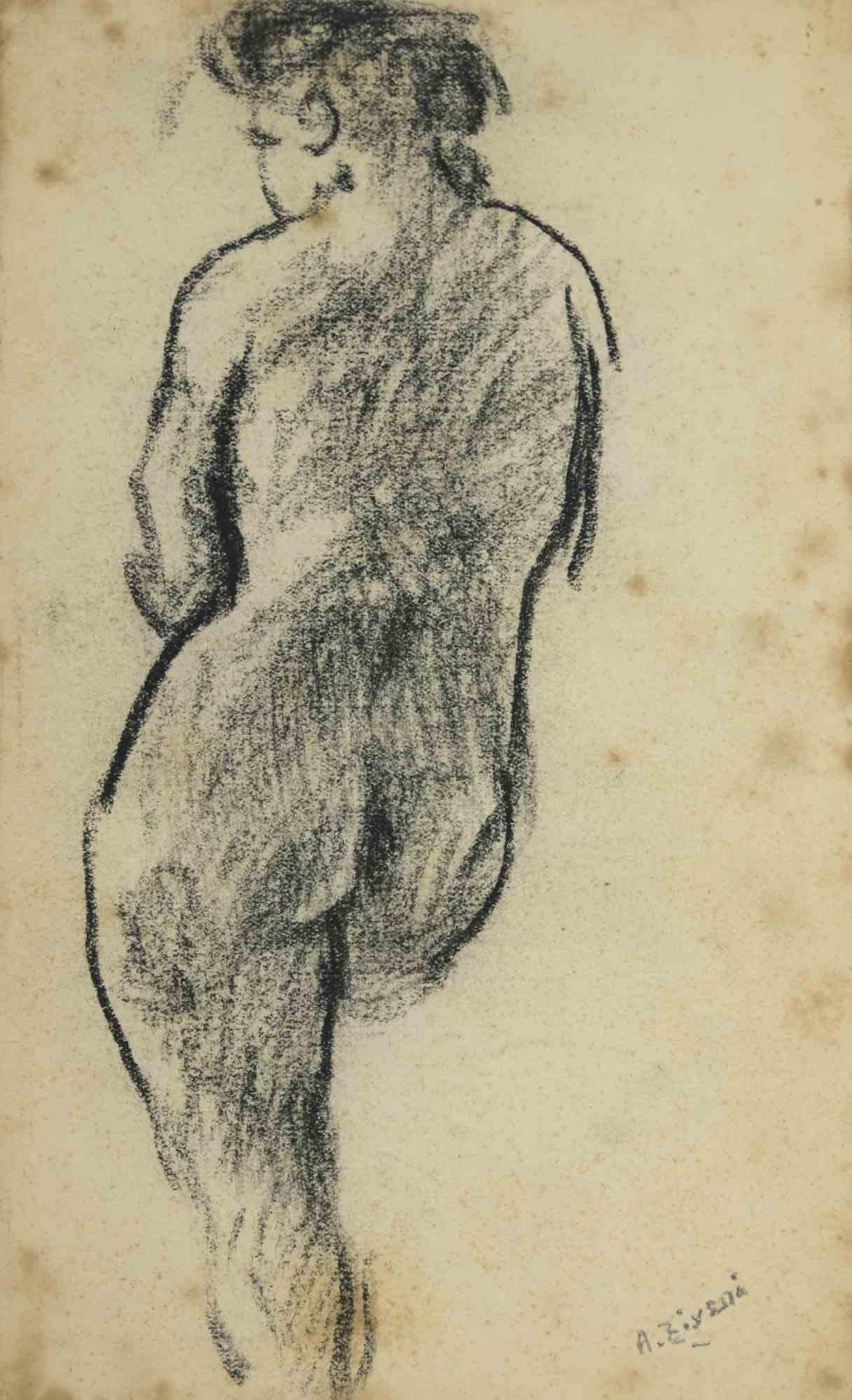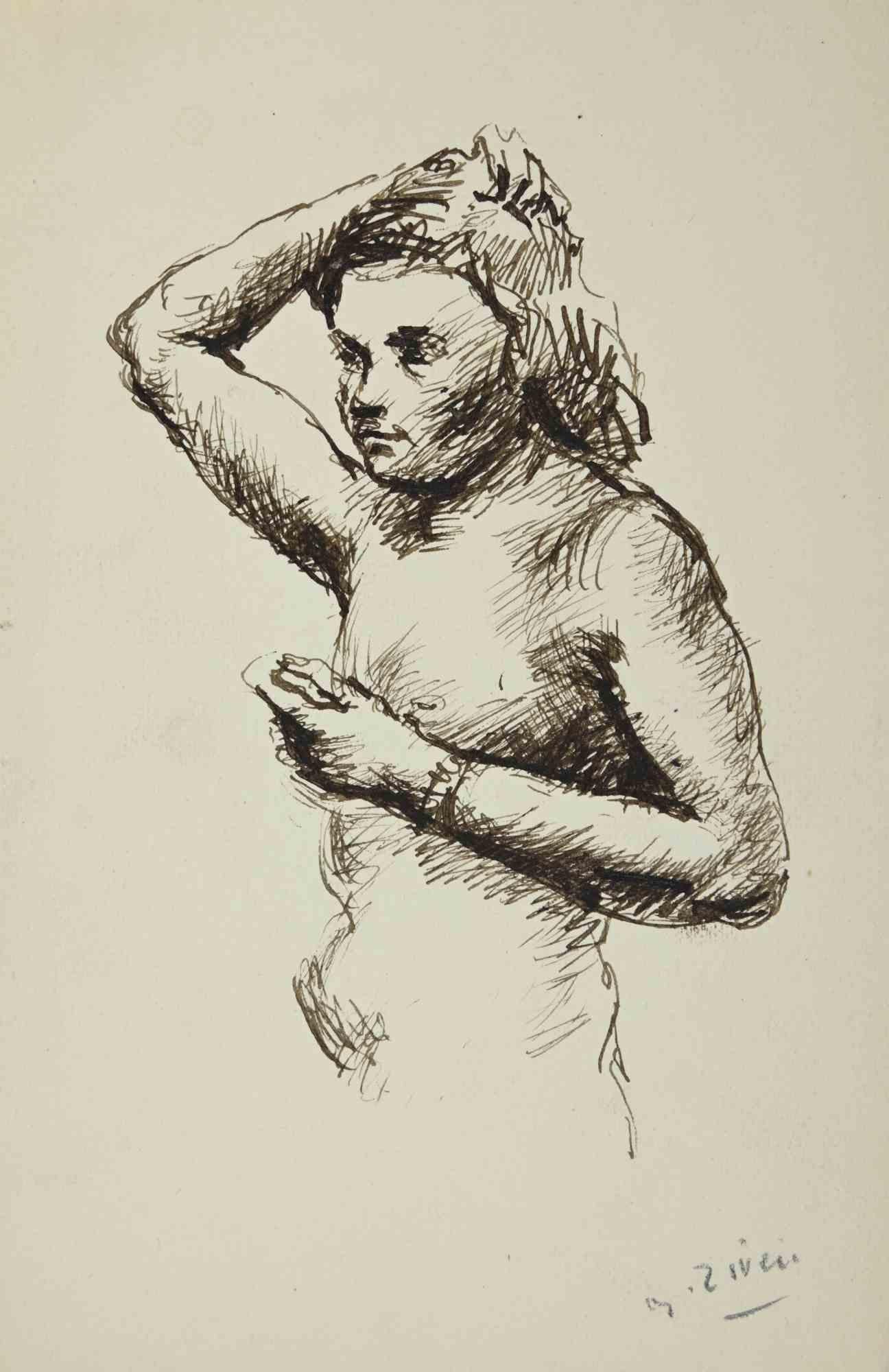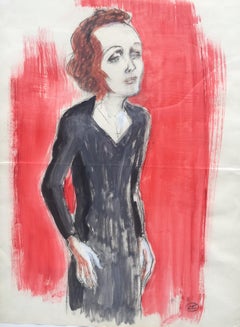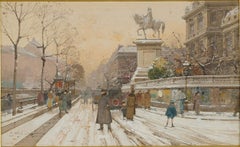
Portrait of Beethoven Charcoal On Paper Signed Alméry Lobel Riche
View Similar Items
Want more images or videos?
Request additional images or videos from the seller
1 of 8
Alméry Lobel Riche Portrait of Beethoven Charcoal On Paper Signed Alméry Lobel Riche1920
1920
About the Item
About the Seller
5.0
Vetted Seller
These experienced sellers undergo a comprehensive evaluation by our team of in-house experts.
1stDibs seller since 2019
8 sales on 1stDibs
More From This SellerView All
- Edith Piaf On Stage Watercolor signed Charles Kiffer circa 1935By Charles KifferLocated in Paris, FREdith Piaf on stage watercolor and pencil on paper, mongrammed K for Charles Kiffer (1902-1992), Workshop stamp. Charles Kiffer is well known for his figures, paintings, prints, pos...Category
1930s Modern Portrait Drawings and Watercolors
MaterialsWatercolor
- Simone, Pastel On Paper, Signed Jean-Albert Grand-CarteretBy Jean Albert Grand-CarteretLocated in Paris, FRPortrait of a naked woman, Simone. Pastel signed on the left side J.A.GRAND-CARTERET. Circa 1930-1940. Jean Albert Grand-Cartenet is a painter of nudes and portraits who was the ...Category
1940s Modern Nude Drawings and Watercolors
MaterialsPastel
- The Paris Hotel de Ville , Watercolor signed Signed E. Galien Laloue, circa 1920By Eugene Galien-LaloueLocated in Paris, FRView of Paris: The Hotel de Ville banks and the statue of Etienne Marcel under Snow Watercolor Signed E. Galien Laloue, circa 1910-1920 Appraisal by Mr Noé Willer. (Will figurate in...Category
Early 20th Century Academic Landscape Drawings and Watercolors
MaterialsWatercolor
- Bacchanal scene with nymp and Satyrs, pencil on Paper signed and dated 1778Located in Paris, FRA Nymph and two Satyrs Signed lower right "................fecit" and dated 1778 Grey wash over charcoal and brown ink, on laid paper 27 x 40.5 cm / 10.5 X 16 inches Framed : 51 x...Category
1770s Academic Figurative Drawings and Watercolors
MaterialsPencil
- The Circus, The Party Is Here! Oil On Board Signed Patrick Franc And Dated 1962Located in Paris, FRThe Circus, The Party Is Here! Oil on board signed bottom left Patrick Franc and dated 1962 Dimensions: 50 x 65 cm ( 19.685 x 25.591 inches) Dimensions with frame: 56 x 71 x 1 c...Category
1960s Contemporary Figurative Paintings
MaterialsOil
- The Pearl Lady, Oil on board signed Honthorst, dated 1644By Gerard van HonthorstLocated in Paris, FRThe Pearl Lady, most probably Elisabeth of Bohem, Princess Palatine. Oil on board signed Honthorst, dated 1644 Within a beautiful tortoise shell With a certificate by René Millet ( Well Known French Expert in Paris) The young unknown portrait shows the talent of the artist. We will appreciate the quality of glazed face, the light in the beads and the psychological analysis of the model. We almost read the character of the model. This type of face is found throughout the valley of the Rhin, Switzerland, the Netherlands. Our beauty is flirtatious and love beautiful pearls, symbol of fidelity. And so the large barocco pearl, the earrings, the necklace, the adornment in her hair; all attest of the prosperity. Gerrit Van Honthorst was born in 1590 and died 1656. His career is divided into two very different parts. In the first part of his life he is The “Night Master”, "Cavaragesque" painter, that the Italian nicknamed GUERARDO OF THE NOTTE. This period mainly Roman, which will influence LA TOUR and REMBRAND overshadowed the rest of his work. Indeed, it has been forgotten today; but when GUERARDO DE LA NOTTE returned to Utrecht, he became a fashionable portrait's painter. Radical changes without knowing the real reasons although it is often forgotten that a painter like everyone needs to survive ... Especially since the death of Van Dyck has opened the road to our artist who will rush into exploiting it. He is called to the court of Charles I, in London, where he will paint the king and the nobles of the court. In 1637, he moved to The Hague and become Van Dyck's official successor for the Netherlands and all Europe. Gerrit van Honthorst’s night paintings caused such a sensation in Rome that he was known as Gherardo delle Notti...Category
17th Century Old Masters Portrait Paintings
MaterialsWood Panel
You May Also Like
- 1940s Charcoal and Pencil Portrait of a ManLocated in Arp, TXArtist Unknown "Tie and Glasses" c. 1940s Charcoal and pencil on paper 13.5"x17" image 15.5"x19" paper unframed $250 Unsigned *Listed price reflects custom framing selected by seller...Category
1940s Modern Portrait Drawings and Watercolors
MaterialsPaper, Charcoal, Carbon Pencil
- Rare Modernist Hungarian Rabbi Pastel Drawing Gouache Painting Judaica Art DecoBy Hugó ScheiberLocated in Surfside, FLRabbi in the synagogue at prayer wearing tallit and tefillin. Hugó Scheiber (born 29 September 1873 in Budapest – died there 7 March 1950) was a Hungarian modernist painter. Hugo Scheiber was brought from Budapest to Vienna at the age of eight where his father worked as a sign painter for the Prater Theater. At fifteen, he returned with his family to Budapest and began working during the day to help support them and attending painting classes at the School of Design in the evening, where Henrik Papp was one of his teachers. He completed his studies in 1900. His work was at first in a post-Impressionistic style but from 1910 onward showed his increasing interest in German Expressionism and Futurism. This made it of little interest to the conservative Hungarian art establishment. However, in 1915 he met the great Italian avant-gardist Filippo Tommaso Marinetti and the two painters became close friends. Marinetti invited him to join the Futurist Movement. The uniquely modernist style that he developed was, however, closer to German Expressionism than to Futurism and eventually drifted toward an international art deco manner similar to Erté's. In 1919, he and his friend Béla Kádar held an exhibition at the Hevesy Salon in Vienna. It was a great success and at last caused the Budapest Art Museum to acquire some of Scheiber's drawings. Encouraged, Scheiber came back to live in Vienna in 1920. A turning point in Scheiber's career came a year later, when Herwarth Walden, founder of Germany's leading avant-garde periodical, Der Sturm, and of the Sturm Gallery in Berlin, became interested in Scheiber's work. Scheiber moved to Berlin in 1922, and his paintings soon appeared regularly in Walden's magazine and elsewhere. Exhibitions of his work followed in London, Rome, La Paz, and New York. Scheiber's move to Germany coincided with a significant exodus of Hungarian artists to Berlin, including Laszlo Moholy-Nagy and Sandor Bortnyik. There had been a major split in ideology among the Hungarian avant-garde. The Constructivist and leader of the Hungarian avantgarde, Lajos Kassák (painted by Hugó Scheiber in 1930) believed that art should relate to all the needs of contemporary humankind. Thus he refused to compromise the purity of his style to reflect the demands of either the ruling class or socialists and communists. The other camp believed that an artist should be a figurehead for social and political change. The fall out and factions that resulted from this politicisation resulted in most of the Hungarian avant gardists leaving Vienna for Berlin. Hungarian émigrés made up one of the largest minority groups in the German capital and the influx of their painters had a significant effect on Hungarian and international art. Another turning point of Scheiber's career came in 1926, with the New York exhibition of the Société Anonyme, organized by Katherine Dreier. Scheiber and other important avant garde artists from more than twenty-three countries were represented. In 1933, Scheiber was invited by Marinetti to participate in the great meeting of the Futurists held in Rome in late April 1933, Mostra Nazionale d’Arte Futurista where he was received with great enthusiasm. Gradually, the Hungarian artists began to return home, particularly with the rise of Nazism in Germany. Kádar went back from Berlin in about 1932 and Scheiber followed in 1934. He was then at the peak of his powers and had a special flair in depicting café and cabaret life in vivid colors, sturdily abstracted forms and spontaneous brush strokes. Scheiber depicted cosmopolitan modern life using stylized shapes and expressive colors. His preferred subjects were cabaret and street scenes, jazz musicians, flappers, and a series of self-portraits (usually with a cigar). his principal media being gouache and oil. He was a member of the prestigious New Society of Artists (KUT—Képzőművészek Új Társasága)and seems to have weathered Hungary's post–World War II transition to state-communism without difficulty. He continued to be well regarded, eventually even receiving the posthumous honor of having one of his images used for a Russian Soviet postage stamp (see image above). Hugó Scheiber died in Budapest in 1950. Paintings by Hugó Scheiber form part of permanent museum collections in Budapest (Hungarian National Museum), Pecs (Jannus Pannonius Museum), Vienna, New York, Bern and elsewhere. His work has also been shown in many important exhibitions, including: "The Nell Walden Collection," Kunsthaus Zürich (1945) "Collection of the Société Anonyme," Yale University Art Gallery, New Haven, Connecticut (1950) "Hugó Scheiber: A Commemorative Exhibition," Hungarian National Museum, Budapest (1964) "Ungarische Avantgarde," Galleria del Levante, Munich (1971) "Paris-Berlin 1900-1930," Centre Georges Pompidou, Paris (1978) "L’Art en Hongrie, 1905-1920," Musée d’Art et l’Industrie, Saint-Etienne (1980) "Ungarische Avantgarde in der Weimarer Republik," Marburg (1986) "Modernizmus," Eresz & Maklary Gallery, Budapest (2006) "Hugó Scheiber & Béla Kádár," Galerie le Minotaure, Paris and Tel Aviv (2007) Hugó Scheiber's paintings continue to be regularly sold at Sotheby's, Christie's, Gillen's Arts (London), Papillon Gallery (Los Angeles) and other auction houses. He was included in the exhibition The Art Of Modern Hungary 1931 and other exhibitions along with Vilmos Novak Aba, Count Julius Batthyany, Pal Bor, Bela Buky, Denes Csanky, Istvan Csok, Bela Czobel, Peter Di Gabor, Bela Ivanyi Grunwald, Baron Ferenc Hatvany, Lipot Herman, Odon Marffy, C. Pal Molnar...Category
Early 20th Century Modern Figurative Paintings
MaterialsPaper, Charcoal, Pastel, Watercolor, Gouache
- Charcoal Drawing "Waiting" Pensive Woman Americana WPA ArtistBy William GropperLocated in Surfside, FL14x11.5 image size , 22.5x17.5 backing size The New-York born artist William Gropper was a painter and cartoonist who, with caricature style, focused on social concerns, and was ac...Category
Mid-20th Century Modern Portrait Drawings and Watercolors
MaterialsCharcoal
- Self Portrait, Charcoal on Paper, 20th Century British DrawingBy William DringLocated in London, GBCharcoal on paper Image size: 4 1/2 x 4 1/4 inches (11.5 x 10.75 cm) Mounted with a contemporary style frame This is a somewhat haunting self-portrait by William Dring, crafted in c...Category
20th Century Modern Portrait Drawings and Watercolors
MaterialsPaper, Charcoal
- Portrait - Drawing in Charcoal - Mid 20th CenturyLocated in Roma, ITPortrait is an original charcoal drawing on paper, realized by an anonymous artist in the Mid-20th Century. Good conditions. The artwork represented through deft strokes by mastery.Category
Mid-20th Century Modern Figurative Drawings and Watercolors
MaterialsCharcoal, Paper
- Working Child - Drawing by Tibor Gertler - Mid 20th CenturyBy Tibor GertlerLocated in Roma, ITWorking Child is a drawing on creamy color paper realized by Tibor Gertler in the mid-20th century. Charcoal drawing. Good conditions, aged margins. The artwork is uniquely depict...Category
Mid-20th Century Modern Figurative Drawings and Watercolors
MaterialsCharcoal
